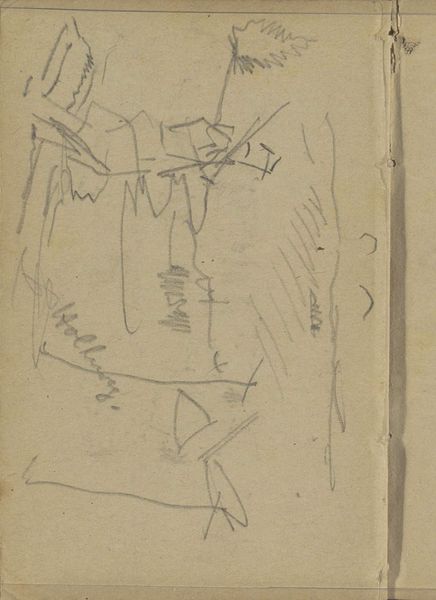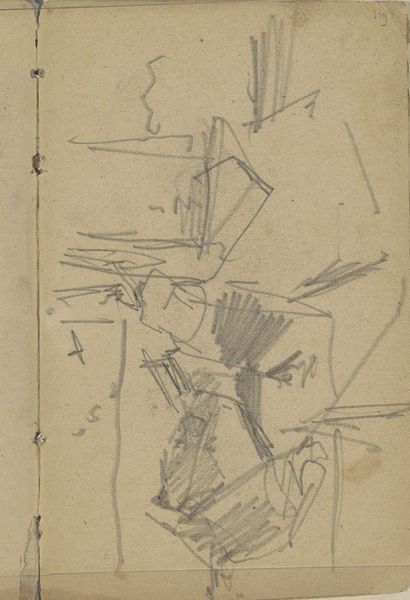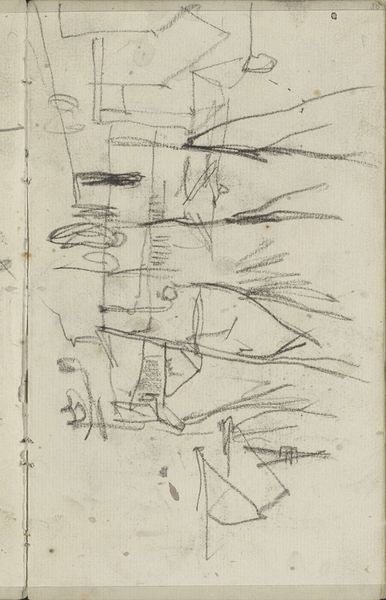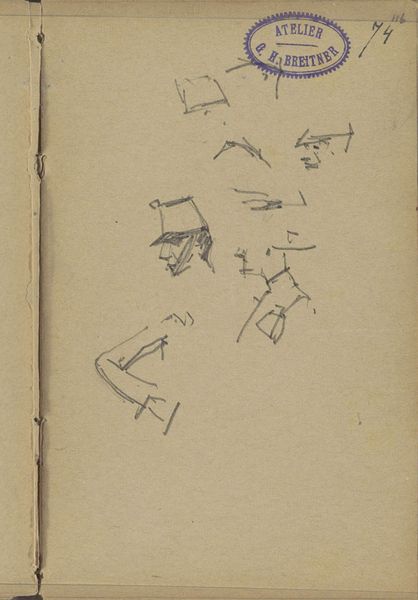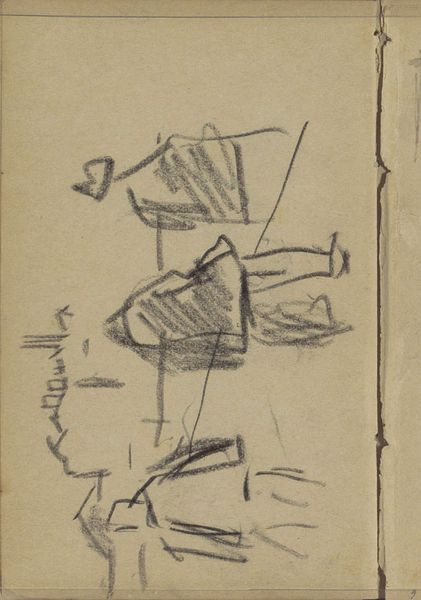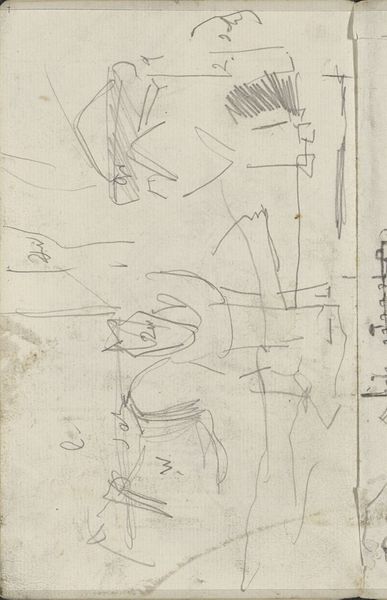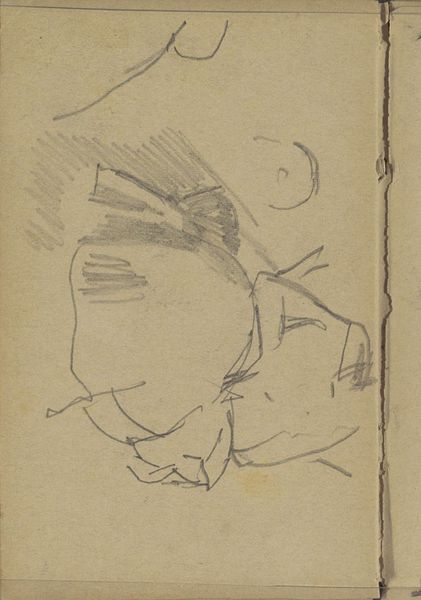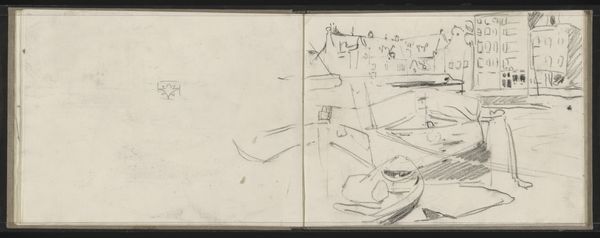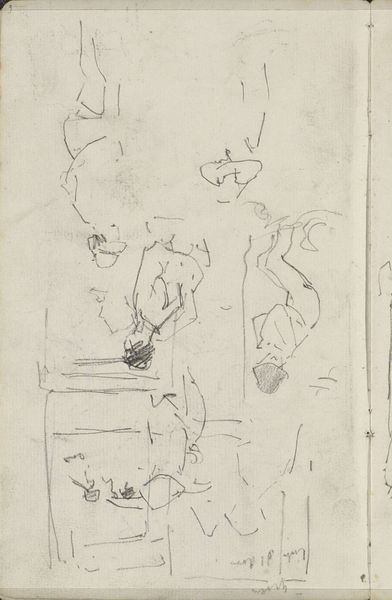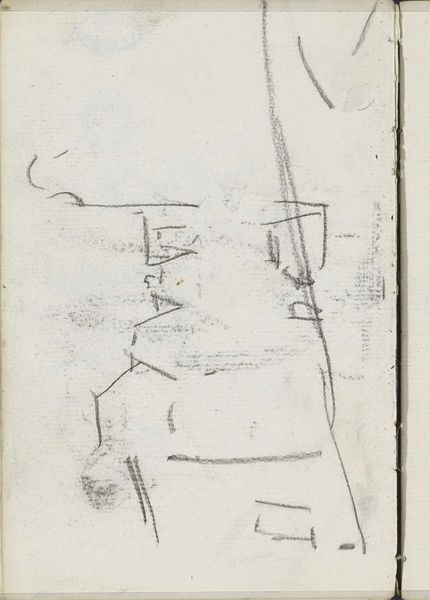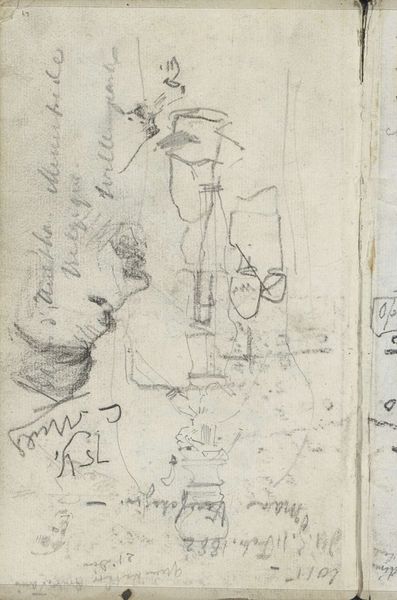
drawing, paper, pencil
#
portrait
#
drawing
#
amateur sketch
#
toned paper
#
light pencil work
#
pencil sketch
#
incomplete sketchy
#
landscape
#
figuration
#
paper
#
personal sketchbook
#
idea generation sketch
#
sketchwork
#
pencil
#
horse
#
sketchbook drawing
#
sketchbook art
#
realism
Copyright: Rijks Museum: Open Domain
Editor: Breitner's "Figuurstudies en een paardenhoofd," created between 1880 and 1882, a pencil drawing on paper, looks almost like a fleeting thought. What jumps out at me is its unfinished quality, like catching glimpses of ideas in motion. What do you see in this piece? Curator: What strikes me is Breitner’s engagement with the raw, unfiltered representation of everyday life, characteristic of the Realist movement, but tinged with a specific historical moment. These figures, quickly sketched, speak to the artist's process, his active observation within a rapidly industrializing Amsterdam. Consider how this sketch challenges academic traditions which prioritize idealized forms. In what ways can we read these fragmentary studies as a commentary on social visibility and representation during this era? Editor: So, you're saying that even in its incompleteness, the sketch reveals Breitner's positioning himself against established artistic norms, pointing to his contemporary social environment? I hadn't thought about it in terms of social commentary, I saw it as more of a technical study. Curator: Precisely. Think about whose likeness gets captured and celebrated in art. Are these the bourgeois figures of traditional portraiture? Or does Breitner, in his sketches, give attention to those often unseen, making their presence—however fleeting—visible? These 'figure studies' encourage us to contemplate questions around class and the democratization of representation. And the horse's head? Consider the animal's role within a city transforming due to industrial progress, its presence alluding to labor, transit, and shifting power dynamics. Editor: That's a really compelling way to look at it! It’s more than just practice; it's about what he chose to practice, and what that says about the world around him. Curator: Indeed. It underscores the necessity of examining the societal implications behind every artistic choice. Editor: I'll definitely be thinking about sketches differently from now on. It shows how the artist sees, and how society impacts his vision. Curator: Exactly! Keep looking beyond the surface; the true value often lies in questioning the 'why' behind art.
Comments
No comments
Be the first to comment and join the conversation on the ultimate creative platform.
